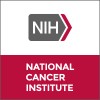
ABT-751 With Chemotherapy for Relapsed Pediatric ALL
Recurrent Pediatric ALLRelapsed Pediatric ALL2 moreThis is a phase I/II study of an investigational drug called ABT-751, produced by Abbott Laboratories, given in combination with chemotherapy drugs used to treat acute lymphoblastic leukemia (ALL) that has come back (recurred). The phase I portion of this study is being done to find the highest dose of ABT-751 that can be given safely in combination with other chemotherapy drugs. A safe dose is one that does not result in unacceptable side effects. After a safe dose for ABT-751 given with chemotherapy has been found, the study will add additional patients to find out if ABT-751 (given at the maximal safe dose) when given with additional chemotherapy is an effective therapy for the treatment of children with relapsed ALL. It is expected that approximately 15-35 children and young adults will take part in this study.

Iodine I 131 Monoclonal Antibody BC8, Fludarabine Phosphate, Cyclophosphamide, Total-Body Irradiation...
Acute Myeloid Leukemia Arising From Previous Myelodysplastic SyndromeAdult Acute Lymphoblastic Leukemia in Remission8 moreThis phase I trial studies the side effects and best dose of iodine I 131monoclonal antibody BC8 when given together with fludarabine phosphate, cyclophosphamide, total-body irradiation, and donor bone marrow transplant, and to see how well they work in treating patients with acute myeloid leukemia or acute lymphoblastic leukemia that has spread to nearby or other places in the body (advanced), or high-risk myelodysplastic syndrome. Giving chemotherapy drugs, such as fludarabine phosphate and cyclophosphamide, and total-body irradiation before a donor bone marrow transplant helps stop the growth of cancer or abnormal cells and helps stop the patient's immune system from rejecting the donor's stem cells. Also, radiolabeled monoclonal antibodies, such as iodine I 131 monoclonal antibody BC8, can find cancer cells and carry cancer-killing substances to them without harming normal cells. When the healthy stem cells from a donor are infused into the patient they may help the patient's bone marrow make stem cells, red blood cells, white blood cells, and platelets. Sometimes the transplanted cells from a donor can make an immune response against the body's normal cells. Giving cyclophosphamide together with mycophenolate mofetil and tacrolimus after the transplant may stop this from happening. Giving a radiolabeled monoclonal antibody together with donor stem cell transplant, fludarabine phosphate, cyclophosphamide, mycophenolate mofetil, and tacrolimus may be an effective treatment for advanced acute myeloid leukemia, acute lymphoblastic leukemia, or myelodysplastic syndromes.

A Phase I, Multicenter, Dose Escalation Study of CAT-8015 in Participants With Chronic Leukemia...
LeukemiaLymphoma6 moreThis was a multicenter, Phase 1, standard 3+3 dose-escalation study to evaluate the safety and anti-neoplastic activity of moxetumomab pasudotox in relapsed or refractory participants with chronic lymphocytic leukemia (CLL), prolymphocytic leukemia (PLL) or Small Lymphocytic Lymphoma (SLL).

Campath Maintenance in Chronic Lymphocytic Leukemia
Chronic Lymphocytic LeukemiaThis is a study designed to test whether giving campath (also known as alemtuzumab) on a maintenance schedule will prolong the time until the patient requires chemotherapy.

Obatoclax, Fludarabine, and Rituximab in Treating Patients With Previously Treated Chronic Lymphocytic...
B-cell Chronic Lymphocytic LeukemiaLeukemia6 moreObatoclax may stop the growth of chronic lymphocytic leukemia by blocking blood flow to the cancer and by blocking some of the enzymes needed for cell growth. Drugs used in chemotherapy, such as fludarabine, work in different ways to stop the growth of cancer cells, either by killing the cells or by stopping them from dividing. Monoclonal antibodies, such as rituximab, can block cancer growth in different ways. Some block the ability of cancer cells to grow and spread. Others find cancer cells and help kill them or carry cancer-killing substances to them. Giving obatoclax together with fludarabine and rituximab may kill more cancer cells. This phase I trial is studying the side effects and best dose of obatoclax when given together with fludarabine and rituximab in treating patients with B-cell chronic lymphocytic leukemia.

Imatinib Mesylate, Busulfan, Fludarabine, and Antithymocyte Globulin for CML Patients
LeukemiaPrimary Objective: To estimate the probability of molecular complete remission at one year for the described sequential treatment approach, with nonablative hematopoietic transplantation, post transplant imatinib mesylate and donor lymphocyte infusion, in patients with Ph-positive Chronic Myelogenous Leukemia (CML) not in blastic transformation. Secondary Objective: Response to post transplant Imatinib mesylate therapy for 12 weeks as treatment of residual disease, response to donor lymphocyte infusion (DLI) for residual disease following imatinib mesylate therapy, as well as engraftment, toxicity, disease free survival and survival, effect of busulfan pharmacokinetics on study outcome.

Study to Assess the Safety of Escalating Doses of AT9283, in Patients With Leukemias
Acute Myeloid LeukemiaAcute Lymphoblastic Leukemia3 moreThe goal of this clinical research study is to find the highest tolerable dose of AT9283 that can be given to patients who have ALL, AML, CML, high-risk myelodysplastic syndromes, or myelofibrosis with myeloid metaplasia. Researchers want to perform pharmacokinetic (PK) testing on blood to find out how quickly the study drug leaves the body and how the body breaks down the drug. The safety and effectiveness of this drug will also be studied.

Etanercept (Enbrel) for Juvenile Myelomonocytic Leukemia
LeukemiaPrimary Objectives: 1.1 Estimate rate of response and define acute toxicity to etanercept used in an up-front phase II window in newly diagnosed or relapsed JMML. 1.2 Determine if response to Tumor Necrosis Factor (TNF) blockade correlates with genetic basis of Juvenile Myelomonocytic Leukemia (JMML) [mutations in NF1, Ras, SHP2] or levels of TNFa. 1.3 Determine if TNF blockade by etanercept results in inhibition of free levels of TNFa and other cytokines by ELISA and bioassay and improves blood counts. 1.4 Estimate the two year event free survival and overall survival in JMML patients following etanercept and allogeneic hematopoietic stem cell transplantation.

Study of the Combination of a Tyrosine Kinase Inhibitor (STI571) and a Pegylated Human Recombinant...
Chronic Myeloid LeukemiaThis is a phase II multicenter, open-label study designed to investigate the feasibility (tolerance, compliance and safety) of a combination of the tyrosine kinase inhibitor STI 571 (GLIVEC, Novartis Pharma) with a pegylated *-Interferon 2b (PEG INTRON). The rationale for testing this combination is that 1) aIFN is curently the first line agent for the treatment of CML, 2) the pegylated formulation of aIFN is more convenient and is better tolerated than the conventional formulation, 3) STI571 is currently the most promising investigational agent for the treatment of CML because it is targeted to the molecular bases of the disease, is effective also in the advanced phases of the disease, and is effective also in the cases who are resistant to aIFN, 4) the mechanisms of action of the two agents are different. Therefore the combination of STI571 and PEGINTRON is likely to provide the best treatment of CML and to be tested very soon in randomized phase III studies of efficacy. So far STI571 and PEGINTRON have been investigated separately. The present study is an exploratory study that has been planned with the aim of evaluating the adverse events and the safety of the combination, so as to identify a safe and tolerable regime that can be tested prospectively for efficacy in a subsequent, randomized phase III study. Based on available knowledge and data, STI571 is more specific and can be more effective than PEGINTRON. Therefore in this exploratory study STI571 is given a priority over PEGINTRON as to dose and dose adaptation. Sixty subjects with chronic phase CML, previously untreated with any one of study drugs, will be enrolled over a 3 months period and will be treated and studied for 12 months. The patients can be pretreated with hydroxyurea , whenever required, hence are treated with STI 571 at a fixed dose (400mg) and with PEG-Intron at doses ranging from 50 to 150 *g weekly (the first cohort of 20 patients at 50 *g/w, the second cohort of 20 patients at 100 *g/w and the third cohort of 20 patients at 150 *g/w). The response (hematologic, cytogenetic and molecular) to the combination treatment will be evaluated every 3 months, and the pharmacokinetics of study drugs will be studied in a sample of study patients. The duration of the study is 12 months, for a total trial time of 15 months.

Aflibercept in Treating Patients With Myelodysplastic Syndromes
Atypical Chronic Myeloid LeukemiaBCR-ABL1 Negative6 moreThis phase II trial is studying how well aflibercept works in treating patients with myelodysplastic syndromes. Aflibercept may be able to carry cancer-killing substances directly to myelodysplastic syndrome cells. It may also stop the growth of cancer cells by blocking blood flow to the cancer
